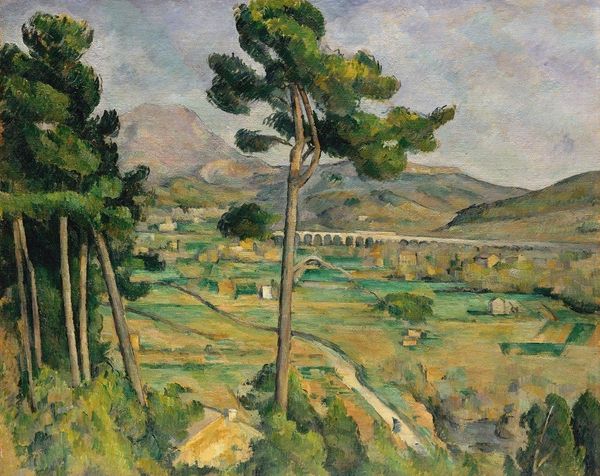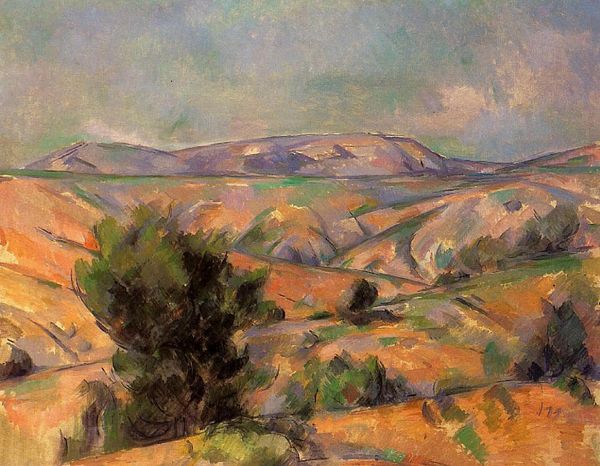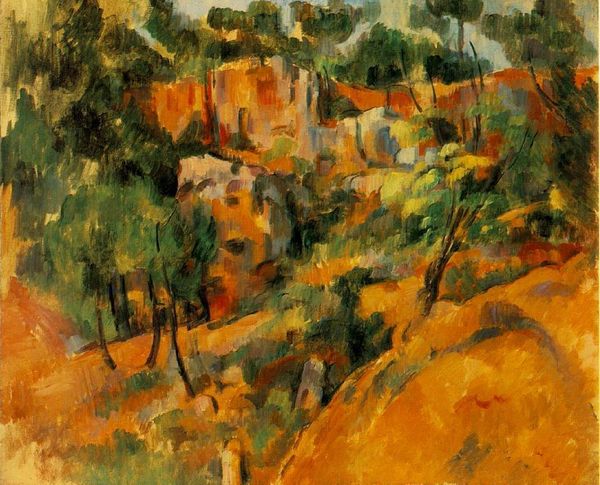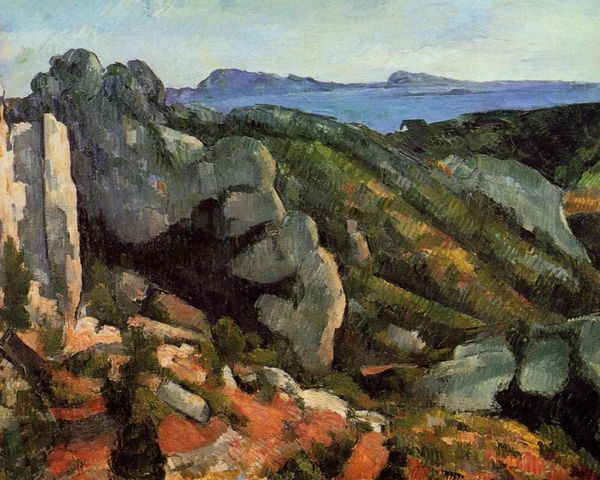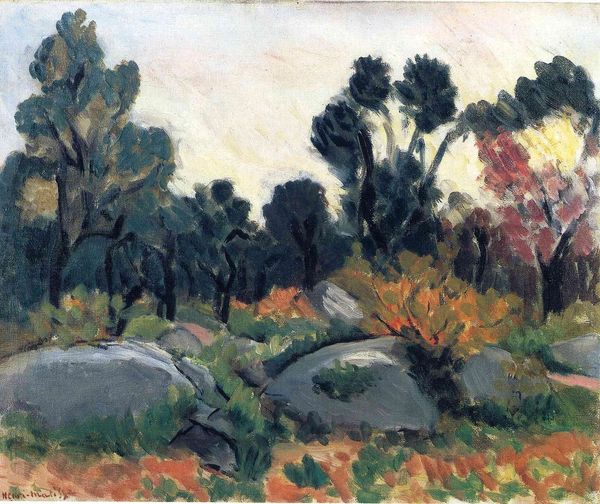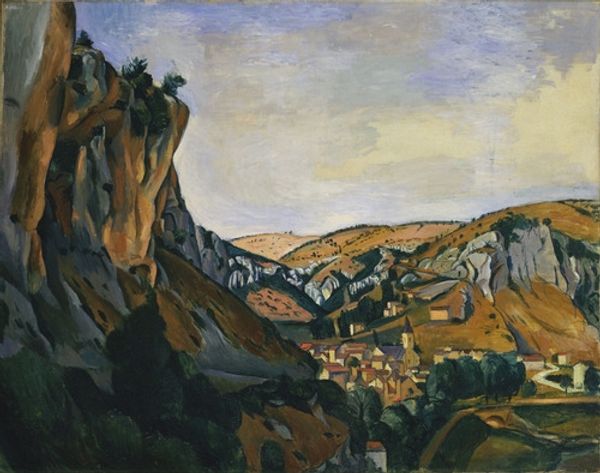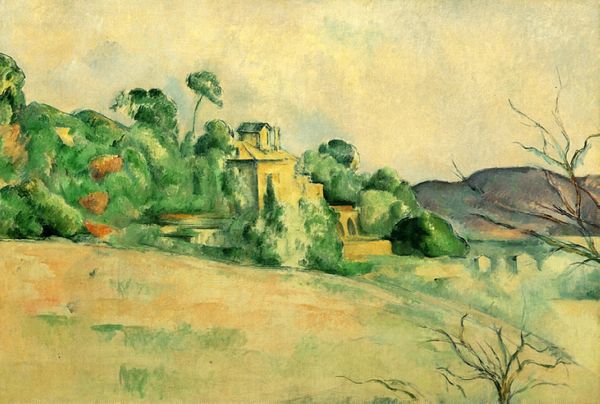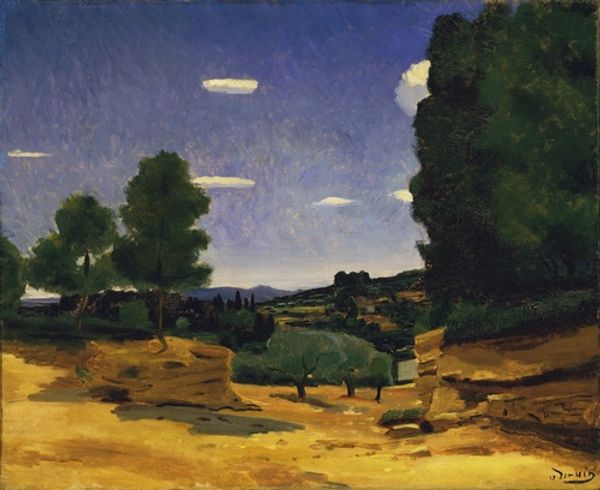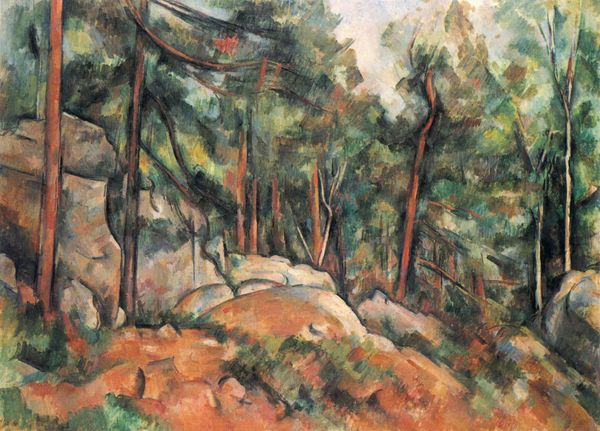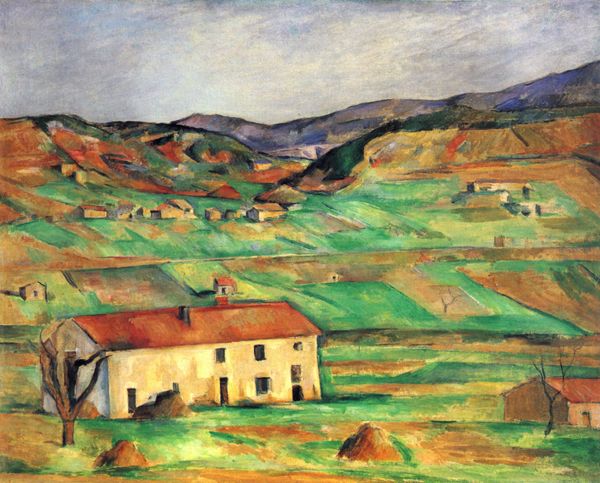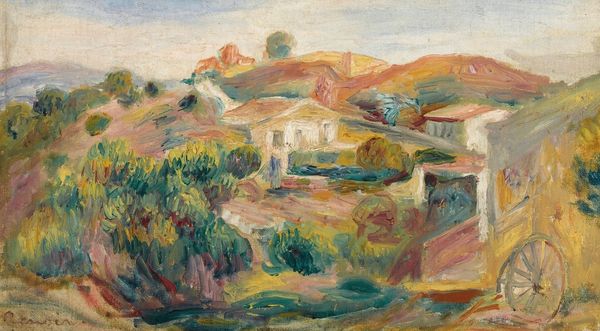
painting, plein-air, oil-paint
#
painting
#
impressionism
#
plein-air
#
oil-paint
#
landscape
#
impressionist landscape
#
oil painting
#
geometric
#
post-impressionism
#
realism
Dimensions: 65 x 81 cm
Copyright: Public domain
Paul Cézanne painted 'Mountains in Provence' in France, sometime in the late 19th century. He used oil on canvas to depict a landscape that was both familiar and deeply personal to him. Cézanne was working at a time when the Académie des Beaux-Arts still held considerable sway over artistic taste. The academy prized a highly polished, illusionistic style of painting. Cézanne's work, however, with its visible brushstrokes and rejection of traditional perspective, was seen by some as a challenge to these established norms. We see a tension between the natural world and the emerging industrial one. The orderly fields and small buildings in the distance suggest human presence. But the rugged rocks in the foreground emphasize the enduring power of nature. Was Cézanne making a conscious effort to critique the art establishment? Or was he simply pursuing his own unique vision? These are the kinds of questions that art historians grapple with. By examining the social and institutional context in which an artwork was created, we can gain a deeper understanding of its meaning and significance.
Comments
No comments
Be the first to comment and join the conversation on the ultimate creative platform.
